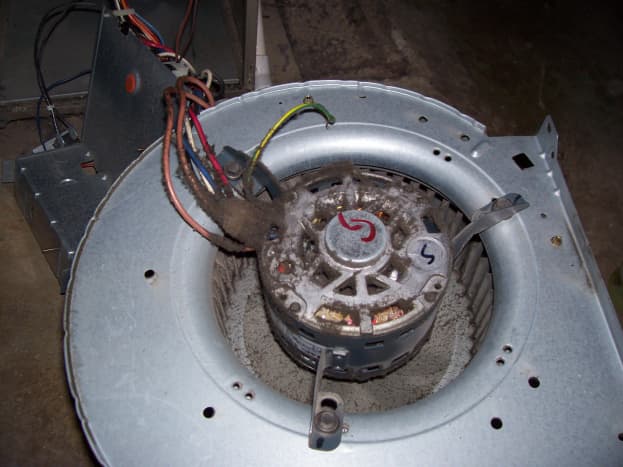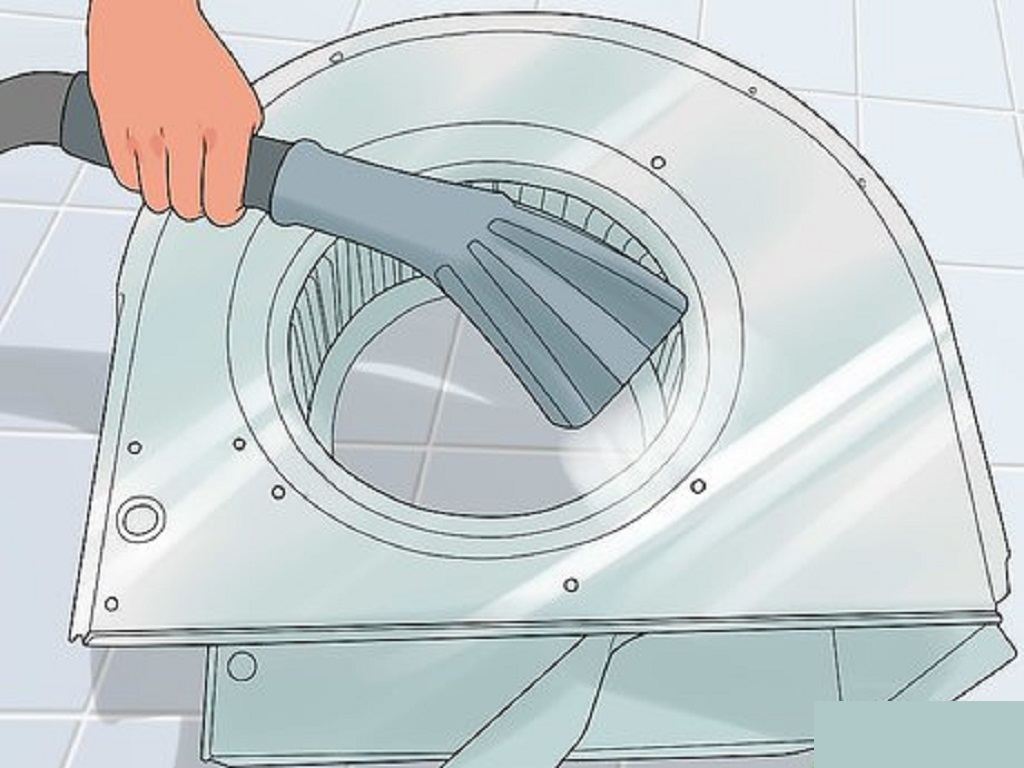A clean furnace blower fan is crucial for heating efficiency. Dust and debris buildup on the fan blades can reduce airflow, overwork your furnace, and cost you money on energy bills. Fortunately, you can easily clean the blower fan with essential cleaning tools and safety precautions.
One important consideration during winter is whether to keep your furnace fan on or set it to auto. Setting the furnace fan on or auto in winteris generally recommended. This setting allows the fan to operate only when the furnace produces heat, ensuring efficient air circulation. Regularly cleaning the fan blades helps maintain this efficiency, preventing the accumulation of dust that could hinder airflow.
Why You Should Clean the Furnace Fan

Here are some key reasons to clean your furnace blower fan regularly:
- Improves Efficiency – Dust buildup on the fan blades reduces airflow, making your furnace work harder to push heat through dusty ducts. Cleaning removes debris so airflow can move freely.
- Saves Energy – With maximized airflow, your furnace doesn’t have to run as long or work as hard to maintain temperature. This saves electricity and natural gas.
- Prolong Furnace Life – An overburdened furnace can overheat due to restricted airflow, causing parts to wear out sooner. Cleaning reduces strain for a longer furnace life.
- Better Air Circulation – Clean fan blades circulate air more effectively, allowing for balanced heating throughout your home. Sticky dust can unbalance the fan, reducing air circulation.
- Fewer Repairs – Lack of cleaning is a leading cause of furnace failure. Regular cleaning prevents costly breakdowns and repairs.
Safety Tips Before Cleaning the Blower Fan
Cleaning the furnace blower fan requires working near hazardous electrical connections. Use caution with these safety tips:
- Turn off the power to the furnace at the breaker before any work. Verify it’s off; do not assume.
- Review the owner’s manual to locate the blower motor and housing.
- Have an assistant or let others in the home know you’ll work on the furnace.
- Keep a first aid kit and fire extinguisher handy.
- Inspect wires, connections, and parts for wear before cleaning. Don’t clean severely worn parts.
- Use non-conductive tools made of wood, plastic, or rubber. Metal tools can cause sparks or electric shocks.
- Wear eye protection – safety glasses or goggles.
- Remove all jewelry that could contact live terminals or moving parts.
- Have proper ventilation in the furnace room to avoid breathing dust. Wear an N95 mask if needed.
- Work carefully on a sturdy ladder or under bright lighting to see clearly.
What You’ll Need to Clean the Furnace Fan

With some essential household items, you’ll have the right tools for this project:
- Flashlight – To see the fan blades and shine light at odd angles
- Gloves – For protection and grip
- Safety goggles – Eye protection from debris
- Vacuum with brush – For general cleaning of the fan blades and housing
- Small brush or paintbrush – For hard-to-reach crevices
- Rags – For wiping down parts
- Bucket of water – For rinsing and picking up dust
Optional items:
- 3M respirator – If very dusty or moldy
- Anti-static spray – For plastic fans prone to dust buildup
- Degreaser – For oily deposits on metal fans
Follow these steps to give your furnace blower fan a thorough cleaning safely:
Turn Off Power and Access Fan
- Shut off power to the furnace at the breaker box.
- Remove the furnace access panel or blower motor compartment cover.
- Inspect wires and parts. Ensure no obstructions block the fan.
- Review the owner’s manual to locate the fan if it is unclear. Some fans detach for cleaning.
Vacuum and Brush Fan Blades
- Carefully vacuum all sides of the fan blades with a soft brush vac attachment.
- Use a small brush to dislodge debris packed into crevices.
- Vacuum dust kicked up by brushing. Avoid dispersing it into the air.
- If very dirty, wipe the blades gently with a water-dampened rag.
- Allow the fan to dry entirely before restoring power.
Clean Fan Housing and Compartment
- Vacuum dust from the fan housing, blower motor compartment, and surrounding furnace parts.
- Wipe down surfaces with a clean rag.
- Use a degreaser to remove oily buildup if present.
- Remove all cobwebs and lint with extended vac attachments.
- Ensure all debris is removed and parts are dry before reassembly.
Reassemble and Restore Power
- Reattach any components removed for access.
- Replace all covers and panels removed during cleaning.
- Restore power to the furnace circuit at the breaker box.
- Please turn on the furnace to test regular operation before using it.
- Repeat the cleaning process annually for clean, efficient heat.
Troubleshooting Furnace Fan Problems
If you notice any of these furnace fan issues, try cleaning first before attempting repairs:
- Low airflow or weak heating – Clean fan blades and housing
- Dust blowing from vents – Vacuum debris from the fan compartment
- Rattling noise – Remove built-up lint causing an imbalance
- Burnt smell – Remove debris and wipe oily deposits
- High energy bills – Cleaning improves efficiency to reduce costs
- Furnace short cycling – Clear fan restriction causing premature shutting off
If cleaning doesn’t solve the problem, contact an HVAC professional to inspect your blower fan and motor.
FAQs
How often should you clean the furnace fan?
Ideally, clean the blower fan annually before each heating season. For very dusty homes, wash it 2-3 times per year.
What problems can a dirty furnace fan cause?
Dust buildup reduces airflow, strains the motor, and allows imbalances. This lowers efficiency and can shorten the furnace’s lifespan.
Can I vacuum the fan while it’s running?
Never vacuum around a running furnace fan! Turn off the power at the breaker before any cleaning work.
What if I have a blocked furnace vent?
If blocked vents severely restrict airflow, clean them before cleaning the blower fan. The fan won’t operate appropriately until the vents are clear.
Why does my furnace fan still run after the furnace shuts off?
This is normal. The fan keeps going for a few minutes to push out residual heat. Make sure it does eventually stop running.
Conclusion
Regularly cleaning your furnace blower fan requires essential household tools and safety awareness. With an annual cleaning, you can maximize heating efficiency, reduce energy use, and add years to your furnace’s lifespan.
Start by shutting off the power and removing debris with a soft brush attachment vac. Wipe all surfaces, check for damage, and let parts dry thoroughly. Restore power once all cleaning is finished.
How long can a kitchen exhaust fan run? Pay attention to fan performance and heating issues throughout the year. Similarly, simple blower fan cleaning can remedy many common furnace problems without a service call. However, when maintaining your kitchen exhaust fan, never vacuum the fan while it’s powered on!


